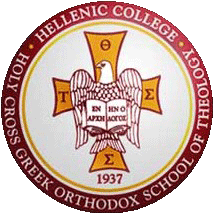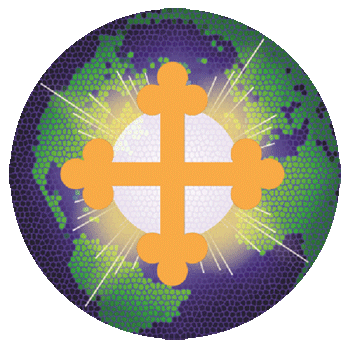"The History of the Orthodox Christian Mission Center"
THE ORTHODOX CHRISTIAN MISSION CENTER
Fr. Alexander Veronis
For 2,000 years the Orthodox Church, known as The Eastern Orthodox Christian Church, has promoted missions. In apostolic times, its apostles reached into the Mediterranean Basin. Orthodox missionaries eventually reached parts of North Africa, India, the Slavic nations, Alaska, Japan, East Africa, the Far East and beyond. The monastic community played a major role in the spread of Orthodox Christianity. Some prominent monastic missionaries were Cyril & Methodius (9th century) in Moravia, Stephen of Perm and Sergius of Radonezh in Russia (14th century), Kosmas Aitolos in the Balkans (18th century), Nicholas Kassatkin in Japan (20th century), and Anastasios Yannoulatos of Greece in East Africa and Albania (20thand 21st centuries). A trademark of Orthodox Christian missions has been the use of the vernacular in the Scriptures, liturgical texts and theological teachings.
Orthodox missions came to the American continent by Russian monks in the last decade of the 18th century, Monk Herman prominent among them. He settled on Spruce Island in Alaska and remained there 40 years. His memorable saying was, “From this day, from this hour, from this moment love God above all else.” However, it was a married Russian priest, Ivan Popov-Veniaminov (1797-1879), who left the greatest Orthodox mission legacy in bringing Orthodox Christianity to Alaska and America. Veniaminov was multi-talented as a linquist, preacher, teacher, builder, translator, writer and explorer. He traveled throughout Alaska for four decades to spread the gospel. The Russian Orthodox Church recalled him in 1868 and made him the Metropolitan of Moscow. He immediately established the Russian Missionary Society of Moscow which flourished until the Bolshevic revolution. The Orthodox Church in America canonized him in 1977 as “St. Innocent of Alaska, Evangelizer of the Aleuts and Apostle to America.”
Large numbers of cradle Orthodox Christians from Europe and the Middle East migrated to the United States in the late 19th and 20th centuries. They came as immigrants seeking a better life and to escape poverty. By 1921 the historic Orthodox Church established the first Greek Orthodox Archdiocese of North & South America for Greek Orthodox immigrants. It was placed under the aegis of the Ecumenical Patriarchate of Constantinople (Istanbul). Other ethnic Orthodox Christians (Russians, Syrians, Lebanese, Antiochians, Serbians, Bulgarians, Ukranians, Albanians) also founded churches in the United States under their respective hierarchies.
During my student years at Lafayette College (1950-1954), I experienced a spiritual awakening to Jesus Christ. Dr. Victor Rambo, an American missionary ophthalmologist to India, lectured at our college about his Christian mission. He spoke with contagious love for Jesus Christ who motivated him to become a medical missionary. His luminous example planted seeds in my heart for cross-cultural missions.
In the 1950s there did not exist a single organized Foreign Cross Cultural Missions Center in the Greek Orthodox Archdiocese of the United States to which I belonged. Two persons nurtured my desire to spread the gospel and Orthodox Christianity through missions. One was my New Testament seminary professor, Fr. Gerasimos Papadopoulos, who epitomized St. Paul’s words, “for me to live is Christ”. The second was Anastasios Yannoulatos whose life radiated Christ. He published “Porefthendes…Go Ye”, a missionary magazine in Athens, Greece based on the Great Commission (Matthew 28:19). He later became an eminent professor of world religions at the University of Athens and a renowned missiologist. “Orthodoxy without missions is inconceivable. It contradicts the very nature of the Church,” he taught. In subsequent years, Archbishop Anastasios served as a cross cultural missionary hierarch for thirty years in Kenya and Albania. He founded two Orthodox seminaries in these two countries which educated hundreds of men and women theologically as Orthodox Christian leaders, both as clergy and laity.
THE GREEK ORTHODOX ARCHDIOCESAN FOREIGN MISSIONS CENTER
Upon the completion of theological studies in Boston and Athens, I assumed my first parish assignment as a Pastor in the Greek Orthodox Archdiocese of the United States in 1961 at the Annunciation Greek Orthodox Church in Lancaster, PA. I remained there for 53 years and initiated a Foreign Missions Committee in 1962 which emphasized foreign cross cultural Orthodox missions This committee, with the blessing of Archbishop Iakovos and the Biennial Clergy-Laity Congress evolved into the (GOA) Greek Orthodox Archdiocesan Mission Committee (1966) and later into the GOA Mission Center (1984), located in New York City at the Greek Orthodox Archdiocese of the United States. In 1984 Archbishop Iakovos transferred this GOA Mission Center to the St. Photios Shrine in St. Augustine, Florida where the first Greek Orthodox Christian immigrants to America had arrived as indentured servants in 1768 via New Smyrna, Florida.
ENDOWMENT FUND FOR ORTHODOX MISSIONS (EFOM)
In 1981 friends and I established an Endowment Fund for Orthodox Missions (EFOM) in Lancaster, PA with four objectives: 1) to endow a Missions Chair at the Holy Cross Greek Orthodox School of Theology in Brookline, MA. 2) to establish an Annual Missions Lectureship at the Holy Cross School of Theology, 3) to offer mission scholarships, 4) to fund mission projects. EFOM increased the awareness of cross-cultural missions throughout the parishes of the GOA and within the Holy Cross School of Theology community. Holy Cross has been the main institution of higher learning for clergy and lay leaders of the GOA in the United States since 1937. By 1987 the GOA Mission Center outgrew the facilities of the St. Photios Shrine and purchased its first Mission Center House located in the center of St. Augustine. The Board named it “The Father Alexander Veronis Orthodox Christian Mission Center”. It served as the administrative headquarters of the Missions Center until the program’s growth required a larger facility.
THE OCMC (ORTHODOX CHRISTIAN MISSION CENTER)
In 1994 the GOA Mission Center expanded into a Pan-Orthodox Mission Center and
took the new name of OCMC (Orthodox Christian Mission Center). From then on the OCMC enjoyed the united resources, support and personnel of the nine canonical Orthodox jurisdictions in America under SCOBA ((Standing Conference of Canonical Orthodox Bishops in the Americas). SCOBA later renamed itself “The Assembly of Canonical Orthodox Bishops of the United States of America.”
ORTHODOX MISSIONARIES
The GOA Missions Center began sending short term mission teams from the United States to East and West Africa (Kenya, Uganda, Tanzania and Ghana) in 1987 and later to 25 other countries. The purpose of these teams was and is to spread the gospel, to build Orthodox churches, schools, medical clinics, and to strengthen the Orthodox Church and faith as needed. They also introduced Orthodox Christians from the United States to cross cultural Orthodox missions. By 2014, 2500 short term and 115 long term missionaries have served in thirty different countries under the OCMC. They consist of clergy, physicians, nurses, teachers, catechists, social workers, church builders, translators, and volunteers of all ages.
MISSIONS INSTITUTE OF ORTHODOX CHRISTIANITY
In 2010, EFOM gave one million dollars to Holy Cross School of Theology to endow a “Missions Institute of Orthodoxy Christianity”. Fr. Luke A. Veronis, an adjunct professor of missions at Holy Cross since 2004, became the Director. He previously had served as a missionary for twelve years in Kenya, Ghana and Albania and had written three books on Orthodox missions.
EDUCATION PROVIDED BY THE OCMC
The OCMC offers scholarship aid for students from abroad to study in the United States in Orthodox colleges and seminaries. These schools have included St. Basil’s Academy, Hellenic College, the Holy Cross Greek Orthodox School of Theology, St. Vladimir’s Orthodox Theological Seminary, St. Tikhon’s Theological Seminary, St. Herman’s Seminary, Carpatho-Russian, Ukranian and Serbian Orthodox Seminaries. Graduates of these schools today serve as leaders in their respective home churches in Uganda, Kenya, Tanzania, Ghana, Sierre Leona, Rwanda, Indonesia, India, Korea, Alaska, Mexico, Russia, Brazil, Guatemala, Romania, Moldova, South Africa, Argentina, Nigeria, Ethiopia, Mongolia, New Zealand, the Figi Islands and elsewhere.
THE OCMC AND ITS MINISTRY
All Orthodox cross cultural mission outreach from the United States occurs today with the blessing and cooperation of the Orthodox hierarches in both the sending and receiving countries. Two Orthodox clergy have served as Executive Directors of the OCMC as it evolved , Fr. (later Bishop) Dimitrios Couchell (1984-1998) and Fr. Martin Ritsi (1998 to the present of 2014). 45 persons, lay and clergy, serve on the OCMC Board of Missions, with their respective bishop’s approval. They represent all the canonical Orthodox jurisdictions of the United States. The Executive Director and his administrative staff execute the goals of the OCMC, assisted by the Board. The Board helps raise the necessary funds to underwrite the ministries of the OCMC. Presidents of the Board of Missions have been Fr. Alexander Veronis, Fr. Paul Costopoulos, Fr. John Chakos, Fr. Constantine Zozos, Helen Nicozisis, Clifford Argue, and Fr. George Liacopulos.
Meropolitan Silas of New Jersey, Bishop Dimitrios of Xanthos, and Metropolitan Savas of Pittsburgh have served as the hierarchical liaisons between the OCMC and the Assembly of Orthodox Bishops in the United States, formerely known as SCOBA.
A NEW AND LARGER OCMC Mission Center
In 2010 the OCMC funded, erected and dedicated a new Mission Center on twenty acres of land in St. Augustine, Florida to accommodate its expanded ministries. The new building was named “The Archbishop Anastasios and Archbishop Demetrios Mission Training Center and Administration Building”. Both hierarchs, whose names appear in the title, have been strong promoters of cross culture missions during the growth of the OCMC. The new Center contains facilities for training and housing missionaries, as well as OCMC administrative offices.
GOAL, MISSION, VISION, AND VALUES OF THE OCMC
The goal of the OCMC is to make disciples of all nations by bringing people to Christ and His Church based on Christ’s Great Commission. “Go make disciples of all nations, baptizing them in the name of the Father, Son and Holy Spirit, teaching them to observe all things that I have commanded you, and lo, I am with you always, even to the end of the age.” (Matthew 28:19-20) The vision of the OCMC is that all people may come to know the saving love of our Lord: Father, Son and Holy Spirit. The OCMC values 1) proclaiming and witnessing Christ to all people with priority given to those who have never heard or accepted the Gospel; 2) sharing the love of Christ for the care of the total person, spiritual and physical; 3) ministry in the language and culture of the people. 4) well-trained missionaries, staff, board, supporters, indigenous leadership and those being served: 5) communities, parishes, and individuals that are mission-minded and have active mission involvement; 6) being an open and transparent agency that promotes the gifts of stewardship provided by the faithful.
References and Resources: Timothy Ware, The Orthodox Church (1963); E.P. Panagopoulos, New Smyrna: An Eighteenth Century Greek Odyssey (1978); Paul D. Garrett, St. Innocent, Apostle to America (1979); Michael Oleksa, Alaskan Missionary Spirituality (1987);Luke A. Veronis, Missionaries, Monks and Martyrs: Making Disciples of All Nations (1994): GO FORTH: Stories of Mission and Resurrection in Albania (2009): Archbishop Anastasios, Mission in Christ’s Way(2010)

